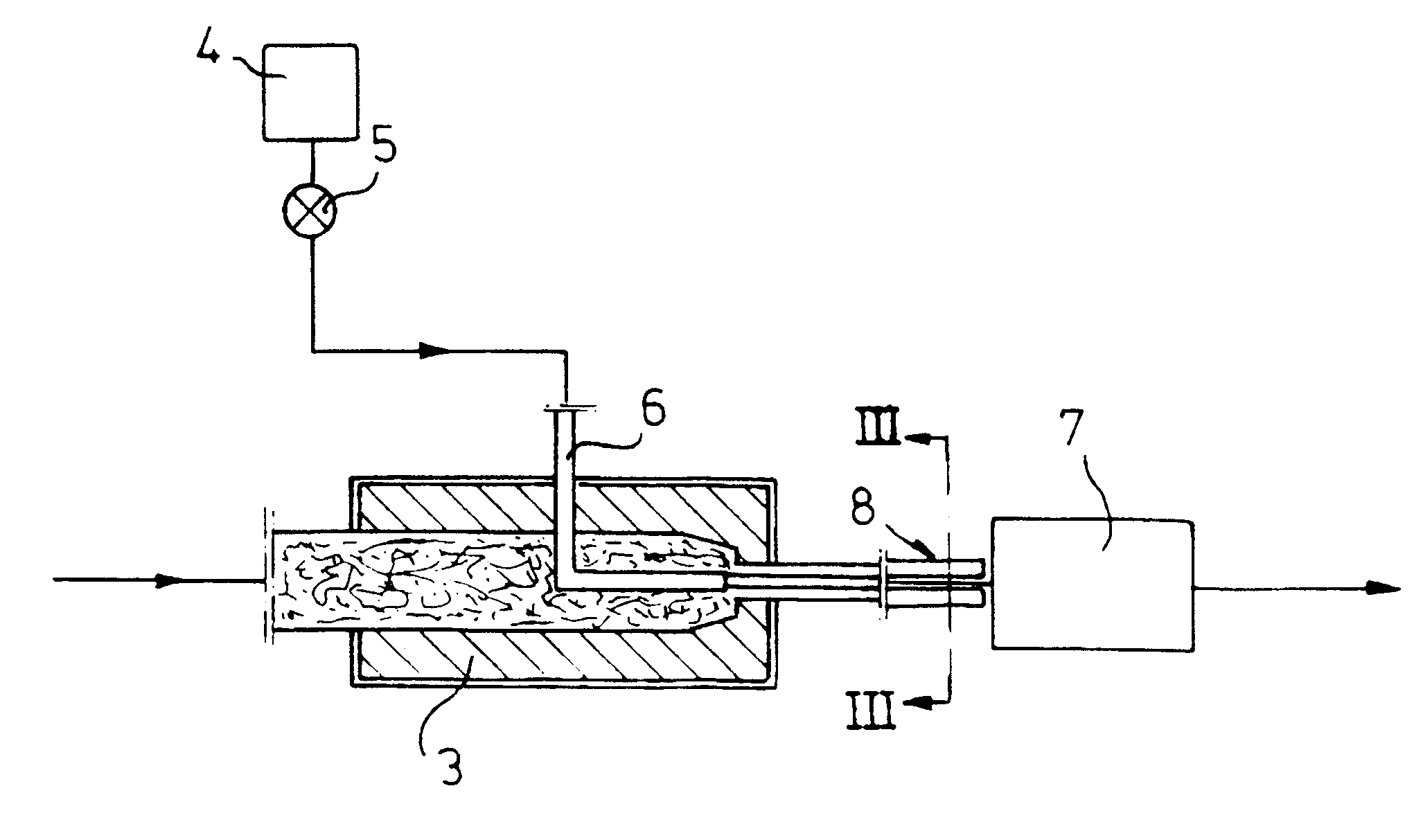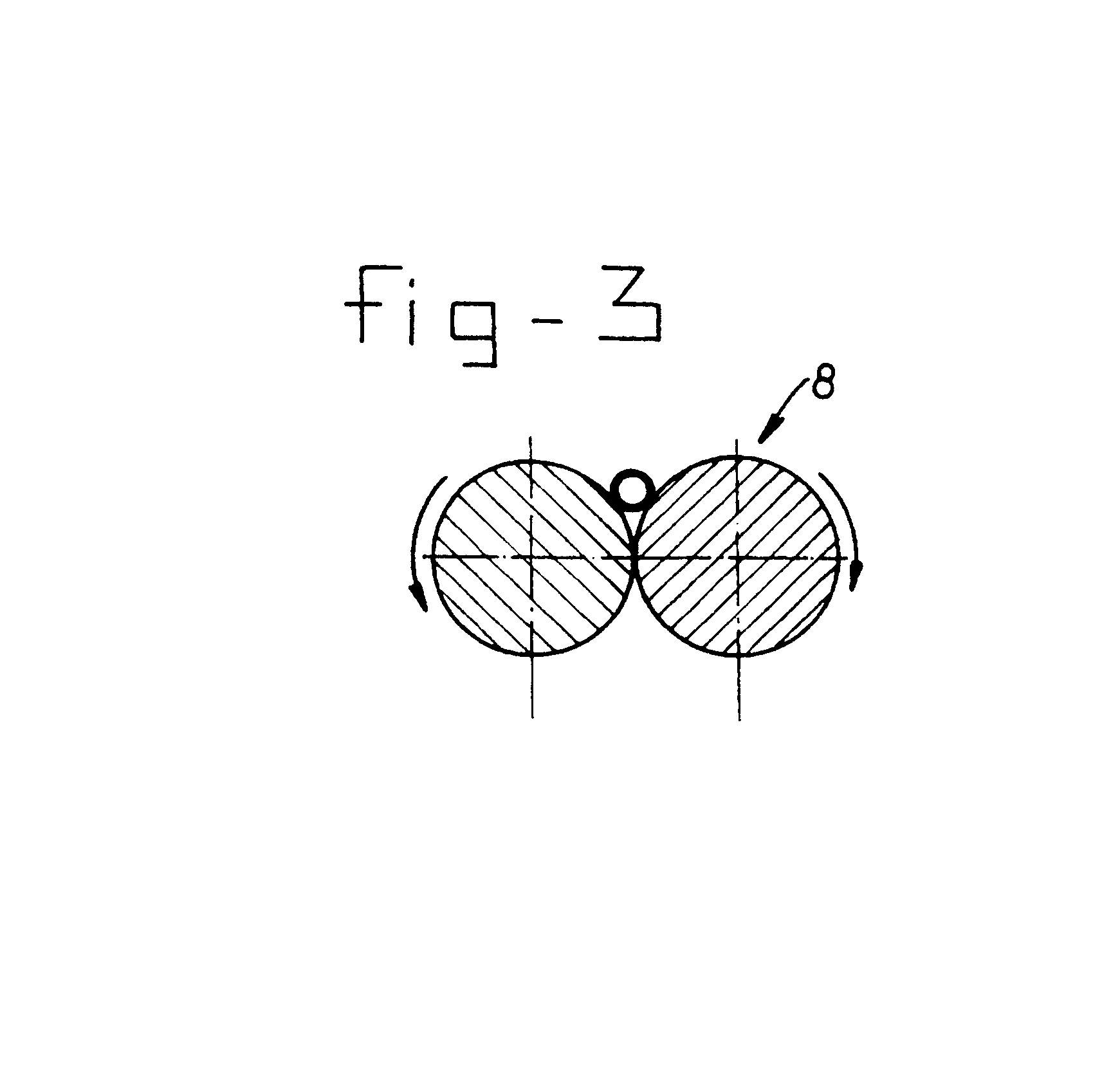Method for producing hollow fibrous membranes for microfiltration, ultrafiltration or gas separation
- Summary
- Abstract
- Description
- Claims
- Application Information
AI Technical Summary
Benefits of technology
Problems solved by technology
Method used
Image
Examples
Embodiment Construction
In this example, submicron .alpha.-Al.sub.2 O.sub.3 is used as the ceramic powder and the binder used is methylcellulose in water.
The .alpha.-Al.sub.2 O.sub.3 powder is mixed, in the dry state, with 3.5% by weight of methylcellulose in a PE flask. 23.3% by weight of water, in which 2.6% by weight of binder (Zusoplast, produced by Zschimmer & Schwarz) is dissolved, is added to this mixture using a sprinkler. The granules obtained above are extruded, with the aid of a single-screw extruder, using the spinneret as shown in FIG. 2, at 35.degree. C., to give a hollow fibrous membrane with an external diameter of 3 mm and an internal diameter of 2 mm. The hollow fibrous membrane is cut off at a length of approx. 50 cm. The hollow fibre is dried at room temperature and then sintered at 1300.degree. C. This results in a hollow fibrous membrane with an external diameter of 2.4 mm and an internal diameter of 1.6 mm and with a porosity of 35% and a mean pore diameter of approx. 0.18 .mu.m.
PUM
| Property | Measurement | Unit |
|---|---|---|
| Thickness | aaaaa | aaaaa |
| Diameter | aaaaa | aaaaa |
| Thickness | aaaaa | aaaaa |
Abstract
Description
Claims
Application Information
 Login to View More
Login to View More - R&D
- Intellectual Property
- Life Sciences
- Materials
- Tech Scout
- Unparalleled Data Quality
- Higher Quality Content
- 60% Fewer Hallucinations
Browse by: Latest US Patents, China's latest patents, Technical Efficacy Thesaurus, Application Domain, Technology Topic, Popular Technical Reports.
© 2025 PatSnap. All rights reserved.Legal|Privacy policy|Modern Slavery Act Transparency Statement|Sitemap|About US| Contact US: help@patsnap.com



